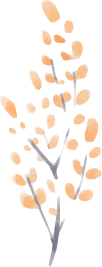

 |  |


“What is a fish hatchery anyway?” Josie asked.
“It is just what it sounds like,” said Grandma. “A hatchery is a place where fish eggs are hatched in a controlled setting.”

“Fish come from eggs, so they hatch!” exclaimed Max.
They pulled up to the fish hatchery parking lot. It had some large buildings and five large half circle shaped buildings next to a small pond.
A volunteer stood next to a pine log building that had a big map of the fish produced at the hatchery. “Welcome!” his voice boomed. “We will start our tour in a few moments. We want to let the other two cars that pulled in with you join us.”
“Isn’t it a beautiful day in Wyoming?” the man asked the group. “My name is Ned, and I will be taking you on a tour of the hatchery. I’m a volunteer. A few of us old folks are spending our senior years as guides at this hatchery in the summers.” He chuckled and motioned for everyone to head toward the half circle shaped buildings. As they got closer, they could see that they were long rectangular shaped pools of water, covered with a dome. “These are called the raceways. We have 21 raceways at the hatchery.”
Ned motioned for the group to follow him into the covered area. Once inside, they could see there was a walkway down the center of long shallow pools that ran on both sides. The pools were full of fish!
“Stay in the center, and walk carefully, we don’t want to have to fish any of you out!” Ned called out to the group. Once the group was all inside, he said, “These are three-year-old Snake River Cutthroat Trout. We call them our ‘root stock.’ That means these are the fish that provide eggs so we can hatch fish!”
Ned continued, “The two pools are divided with the female fish on one side, and the males on the other. The males are more streamlined with a pointy head and a knob on their lower jaw. The females are smaller and have a rounder head.” Ned directed them to look at the fish and see if they could see any of those differences.
“We harvest eggs from the females by pressing on their abdomen and put them in a shallow pan. And, no, it does not hurt them.”
He grinned at the group before pointing at them, “Can anyone guess how many eggs we get from a three-year-old female trout each year?”
Max excitedly raised his hand. Ned pointed at him. “Well, what do you think?”
“25?” Max guessed.
“Good guess! But you’re a little low. Any other guesses?”
“100?” Josie guessed.
Another boy raised his hand, “87?”
Max shook his head, “No, 10,000. Wait, no 100,000!”
Ned laughed, “Good try, all of you but a fish lays a lot more eggs than 87 or 100 eggs and quite a few less than a 100,000. In fact, a three-year-old cutthroat trout lays 1,000 eggs per year, and a six-year-old cutthroat trout lays 3,000 eggs per year. We have those in one of the adjacent pools. At this hatchery, we harvest 1 million to 1.3 million eggs per year!”
“Follow me, and I will show you where we incubate the eggs.” He guided them toward the large building. Inside, he showed them trays that were in stacks that had water running through them.
“We can fit 30,000 eggs in each of these trays. We call them heat stacks. After 3 ½ weeks, we look for two black dots to appear on the eggs. We call that ‘eye up.’ When that happens, we know they will hatch soon, so we put the eggs into the tank room. When they hatch, the fish swim to the surface for food. We call them small fry!”

Ned showed them the tray. It was filled with pinkish orange little balls.
“That is so gross!” whispered Josie as she wrinkled up her nose.
He guided everyone into the next room that had big water tanks. He directed them to look at the fish in the tank.
“Those are so little!” Max gasped. “How do they ever grow into big fish?”
Ned smiled, “They grow into big fish because we protect them and feed them each day. The fish grow on average ½ inch per month.”
He directed them to the next tank. “These are the one-year old fish. This tank holds 7,500 fish, and we feed them five pounds of pellets each day. Once they are this big, the fish and game officers release them into the wild in May and September. This batch will be released in September. They can put 15,000 to 20,000 fish in each truck that they drive out to release the fish.”

Ned smiled, “That is the end of our tour! Does anyone have any questions?”
A boy from the group asked, “How do people get a job here?”
“Well, a college degree in marine biology or fisheries would be a way to work here. Scientists run this place to make sure the fish are healthy. In fact, the manager of this hatchery got her degree in marine biology.”
“That was really interesting,” Josie commented as they walked back to the car. “There is a lot more to fish than I realized!”
“It makes me want to go fishing!” exclaimed Max as he trotted to the car.